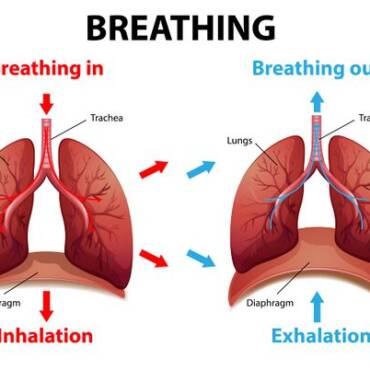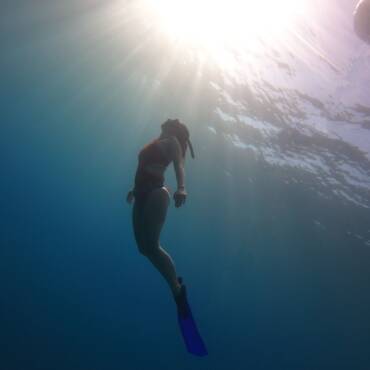What’s a freediver’s dream? (Not a trick question 🙂)
Having substantial total lung capacity.
Why?
A larger total lung capacity equips you with additional air for equalization and a greater supply of oxygen, ultimately enhancing your ability to withstand hypoxia.
But when most people talk about lung capacity, they’re thinking of the volume of air in the chest.
While increasing lung volume helps (think of it like filling more gas in the tank), it’s equally important to focus on how efficiently your lungs work.
Here are 3 ways to increase your lung volume and efficiency:
1) Segmented breathing:
In ‘Segmented breathing’ freedivers separate individual muscle groups used for breathing to maximize their potential.
A friendly warning 🙂.
Breathing from the chest may feel natural, but wouldn’t be right.
The right way:
Practice Controlled Breathing: By gently pursing your lips, you can effectively isolate specific muscle groups and establish a breathing pattern that optimizes the intake of air.
We use the diaphragm in the first part of segmented breathing.
The diaphragm is a muscle that separates the abdominal and chest cavities.
When you draw down on your diaphragm and out on your stomach, it draws air into your lungs, all the way to the bottom.
Inhale to the maximum using only your diaphragm. Be careful not to fill your chest.
Repeat this process four times, and then take a brief moment to pause and relax. Following that, proceed to exhale slowly while using your tongue to press against the roof of your mouth, effectively retaining the air.
Your diaphragm and chest should be completely relaxed.
The next phase of segmented breathing focuses on the chest wall.
Begin by expanding your chest wall to its fullest extent, starting from the lower ribs and gradually progressing upward.
After completing the four diaphragmatic inhalations:
Inhale deeply, emphasizing the use of your diaphragm.
Take a moment to pause and relax.
Next, engage your intercostal muscles to complement the diaphragmatic breath, further enhancing your inhalation.
(Intercostal muscles are the muscles surrounding your ribs). The outer muscles are used to inhale and the inner muscles are used to exhale).
The final part of segmented breathing involves using your shoulders.
Here’s how to perform it:
Raise your shoulders towards your ears while opening your epiglottis, enabling air to pass through. Subsequently, close your epiglottis and instantly relax, allowing your shoulders to drop.
Afterward, follow these steps:
Engage in diaphragmatic inhalation, pause, and relax.
Proceed with chest expansion, pause, and relax.
Move on to shoulder involvement, pause, and relax.
Finally, exhale slowly as before, repeating the process four times.
Segmented breathing will probably take just 5 minutes of your time but doing it three or four times a week helps develop larger and more efficient inhalations.
The more air you can get in, and the more comfortably you can do it, the deeper and longer you can dive.
2) Square or Box Breathing Technique:
This powerful method is designed to promote relaxation and enhance lung capacity.
The key to successful freedive training lies in maintaining a smooth and relaxed breathing rhythm. Begin with 3-minute sessions and gradually extend the duration as you progress.
Follow these straightforward steps to perform Box Breathing:
Step 1: Inhale deeply through your nose, allowing your lungs to effortlessly fill while counting to 4.
Step 2: Hold your breath for 4 seconds.
Step 3: Exhale slowly through your mouth, relaxing your chest over a span of 4 seconds.
Step 4: Keep your lungs empty for an additional 4 seconds. Repeat this process.
Now for the third and slightly more intense method. Practice it only after completing a physical warm-up.
3) Lung Stretching:
Here’s the Basic Full Lung Stretch technique:
- Begin by sitting with your legs crossed and maintaining an upright posture.
- Place your right hand on the ground beside you.
- Breathe gently and prepare to hold your breath.
- While holding your breath, slowly raise your left arm above your head and extend it towards the right side, creating a C shape with your body.
You will experience a pleasant sensation of expansion in your chest.
Hold this position for approximately 20 to 30 seconds, and then exhale slowly.
Repeat the exercise on the left side.
Remember to pay attention to your body and modify the intensity as necessary.
Note: If you want to read about the technique some freedivers use to force more air into their lungs, read this: https://www.apneazone.club/lung-packing/





Add Comment